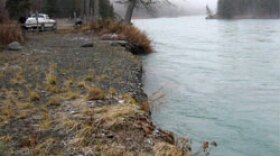Commercial fisheries in Upper Cook Inlet are also getting more time to harvest the late run of sockeye to the Kenai and Kasilof rivers.
ADF&G management coordinator Pat Shields says harvest for the setnet and drift fleets is picking up after a slow start to the season, but is still fairly low compared to past years.
“This run, to date, doesn’t suggest it will be at forecast. However, we’re cognizant of the fact that over the last number of years, a lot of sockeye have been showing up in August, kind of an abnormally large percentage of the run has shown up in August. We’re aware of that, we’re keeping our eyes on that really closely this year, thinking that the data we have indicate that it may occur again. So we really have to harvest as much of this sockeye run now as we can.”
Paired restrictions with the sport fisheries due to low king salmon numbers gave the commercial season its slow start and conservative management approach. Shields says a number of factors could be contributing to the trend of ever-later returns of sockeye. Along with that trend, the Kenai in particular is seeing fewer days with big numbers of salmon hitting the river.
“People use the word pushes or rushes to the river that result in really large single day escapements, we haven’t seen those. We haven’t seen them in the commercial fishery, we haven’t seen them in the offshore test fish project and we haven’t seen them in the sonar program. Typically, there’s one or two or three days during the year where they have a large catch for that day, the average catch for the day is way up. We haven’t seen that for a number of years now, which indicates the fish don’t seem to be schooling out in the Inlet and concentrating in large masses along the rips where they’re available to harvest for the drift fleet. Is it water temperature related, or are there other factors that are causing abnormal swimming behavior? We just can’t put our finger on that yet, but we do know that it’s changed. It’s not like it used to be.”
The Kenai has yet to officially crack the one hundred thousand fish in a day mark, but came close over the weekend. As of Monday, more than 970,000 late run sockeye had been estimated up the Kenai river. The season total on the Kasilof is now more than 300,000. About 8,000 Kenai king salmon have been counted so far, a little more than halfway to the lower end of the escapement goal.




